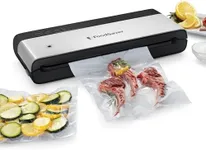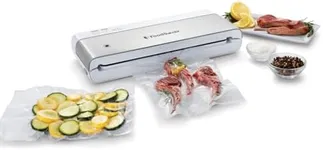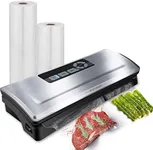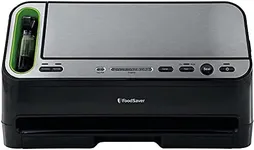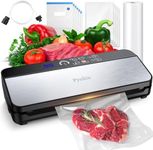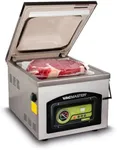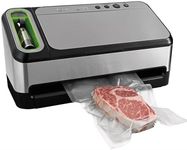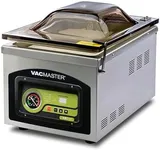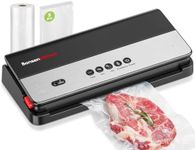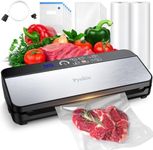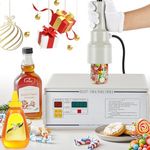Buying Guide for the Best Food Saver Machine
Choosing the right food saver machine can help you extend the shelf life of your food, reduce waste, and save money. When selecting a food saver machine, it's important to consider several key specifications to ensure you get the best fit for your needs. Understanding these specs will help you make an informed decision and find a machine that suits your lifestyle and food storage requirements.Sealing MechanismThe sealing mechanism is how the food saver machine seals the bags to keep air out. This is important because a good seal ensures that your food stays fresh for a longer period. There are two main types: external and chamber sealers. External sealers are more common and suitable for everyday use, while chamber sealers are more powerful and ideal for heavy-duty sealing. If you plan to use the machine frequently or for larger quantities, a chamber sealer might be the better choice. For occasional use, an external sealer should suffice.
Vacuum StrengthVacuum strength refers to the machine's ability to remove air from the bag. This is crucial because the less air left in the bag, the longer your food will stay fresh. Vacuum strength is usually measured in inches of mercury (inHg). Machines with higher vacuum strength (around 20-25 inHg) are more effective at preserving food. If you need to store food for extended periods or freeze it, opt for a machine with higher vacuum strength. For short-term storage, a lower vacuum strength may be adequate.
Bag CompatibilityBag compatibility indicates the types of bags the machine can use. This is important because using the right bags ensures a proper seal and optimal preservation. Some machines are compatible with proprietary bags, while others can use generic or multiple types of bags. If you prefer flexibility and cost-effectiveness, choose a machine that works with various bag types. If you want convenience and guaranteed compatibility, a machine that uses proprietary bags might be better.
Size and PortabilityThe size and portability of the food saver machine determine how easy it is to store and move around. This is important if you have limited counter or storage space. Smaller, more portable machines are ideal for occasional use and small kitchens. Larger machines may offer more features and power but require more space. Consider how often you'll use the machine and where you'll store it when not in use to decide on the right size for you.
Ease of UseEase of use refers to how user-friendly the machine is. This is important because a machine that's easy to operate will save you time and frustration. Look for features like intuitive controls, automatic sealing, and easy-to-clean components. If you're new to using food saver machines, a model with simple, straightforward functions will be more suitable. Experienced users might appreciate advanced features that offer more control and customization.
Additional FeaturesAdditional features can enhance the functionality of the food saver machine. These might include marinating modes, pulse vacuum options, or built-in bag cutters. These features are important because they can make the machine more versatile and convenient. If you plan to use the machine for various tasks beyond basic sealing, look for models with these extra features. If you only need it for simple food preservation, a basic model without many extras will be sufficient.
